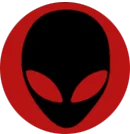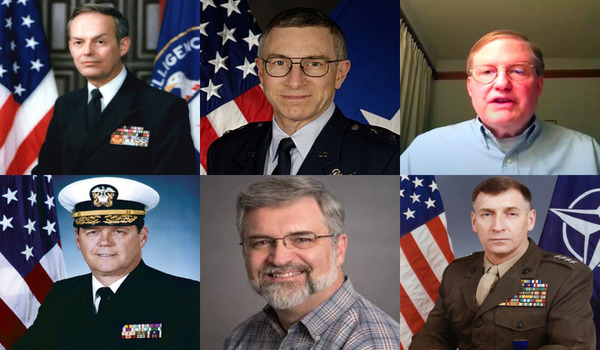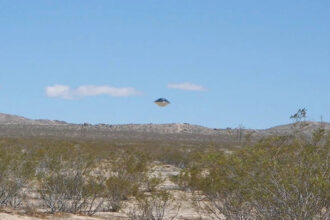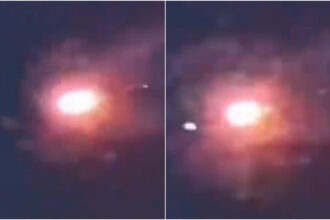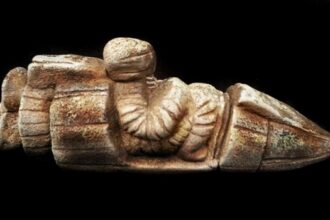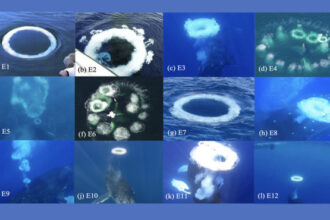According to Congresswoman Anna Paulina Luna, in an interview with AskaPOL on July 25, five witnesses are currently being considered to testify at the upcoming UAP hearing in the United States Congress.
She was also the one who announced the postponement of the hearing, which was originally set for last month but is now scheduled for September.
In this context, expectations are high regarding who will take the witness seats in the next phase of UAP disclosure before Congress. At the last hearing, held on May 1, names such as Harvard professor Dr. Avi Loeb, former Deputy Assistant Secretary of Defense for Intelligence Christopher Mellon, and retired Navy Rear Admiral and oceanographer Tim Gallaudet were heard.
While their contributions were undoubtedly valuable, we are still missing individuals who, one could argue, are even higher up the chain of information. With that in mind, it’s clear that many other names could be considered for this next chapter. Therefore, I’ve compiled a list of potential figures who should be called to testify at the next UAP hearing in the U.S. Congress.
In fact, credit for the names on the list goes to @Neil__Goodman, who posted it earlier on his X account (formerly Twitter). However, I researched more information about the proposed names and can confirm that they are excellent options.
Below, I provide a brief profile of each of them and their respective relevance as potential contributors and witnesses at the upcoming UAP hearing.
1 – Admiral Bobby Ray Inman
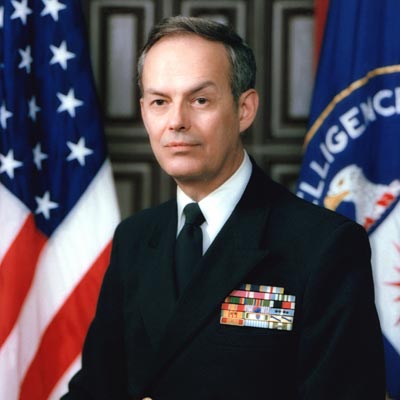
Former NSA (National Security Agency) Director and former Deputy Director of the CIA, Bobby Ray Inman is an influential figure within the U.S. intelligence community during the 1970s and 1980s. Some have suggested he possesses knowledge of highly classified programs.
Inman is a retired U.S. Navy admiral, best known for his work in national security and intelligence. Born in 1931 in Rhonesboro, Texas, he grew up in this small town. He graduated with a degree in Business Administration from the University of Texas at Austin in 1950. After graduation, he joined the Navy, serving as a cryptology officer during the Korean War.
His military career spanned over three decades, during which he held several high-level positions in the government and the U.S. Armed Forces. He served as Naval Intelligence Director and Deputy Director of the Defense Intelligence Agency (DIA), overseeing intelligence collection activities for the military. In 1977, President Jimmy Carter appointed him Deputy Director of the CIA, where he worked closely with Director Stansfield Turner to reform and modernize the agency.
In 1979, Carter appointed him Director of the NSA, a position he held until 1981. During his tenure, Inman supervised efforts to collect and analyze intelligence on foreign governments and terrorist organizations and played a key role in developing the NSA’s satellite-based surveillance system.
In recent years, Inman has become a prominent voice in UAP discussions. In a 2020 interview with the Austin American-Statesman, he expressed his belief that there is “something out there” beyond current scientific understanding and called for greater government transparency and collaboration. He also emphasized the need for scientists and experts from various fields to work together to better understand these phenomena.
Bob Oechsler, a former NASA mission specialist and UFO researcher, claimed to have had a conversation with Admiral Inman, during which Inman allegedly revealed that the U.S. government possesses technology of non-human origin. In a recorded phone call, Oechsler asked if any recovered vehicles would be available for technological research outside military circles. Admiral Inman replied that, although the answer was negative ten years ago, the government might now be becoming more open on the matter.
Some facts about Bobby R. Inman:
- He was awarded the National Security Medal by President Ronald Reagan in 1981 for his contributions to national security and intelligence.
- He is a member of the Council on Foreign Relations, a nonpartisan think tank promoting understanding of foreign policy and international affairs.
- He has served on boards of major corporations, including SBC Communications, Dell, and Lockheed Martin.
- Beyond his government and national security work, Inman is active in academia and author or co-author of several books on national security policy and intelligence, including Strategic Intelligence: Windows into a Secret World (2005) and Decision Points: How to Be Your Best When It Matters Most (2017).
2 – Almirante Thomas R. Wilson
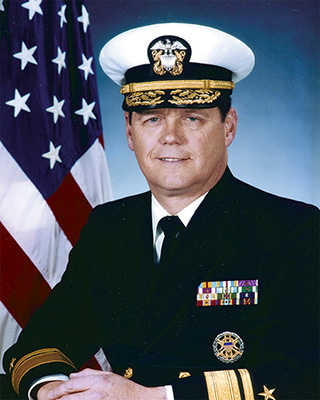
Former Director of the DIA (Defense Intelligence Agency) and former Director of Intelligence for the Joint Chiefs of Staff (J-2).
Relevance: A central figure in the famous “Wilson Memo” (or “Wilson-Davis Notes”) — a leaked document alleging that Wilson attempted to gain access to a secret program involving the recovery and reverse engineering of non-human technology, but was denied access.
Thomas Ray Wilson (born March 4, 1946) is a retired Vice Admiral of the United States Navy. He served as the 13th Director of the Defense Intelligence Agency (DIA) from July 27, 1999, to July 2002.
Prior to that, he held several key positions within the U.S. military intelligence structure, including Director of Intelligence (J-2) for the Joint Chiefs of Staff, Associate Director of Central Intelligence for Military Support at the CIA, Vice Director of Intelligence for the Joint Chiefs of Staff, and Director of Intelligence for the United States Atlantic Command.
After retiring from the Navy in 2002, Wilson entered the private sector, holding executive roles at Alliant Techsystems, Inc. (ATK). There, he served as President of ATK Missile Systems, Senior Corporate Vice President, President of the ATK Precision Systems Group, and Senior Vice President for Maritime Operations. He retired from the company in 2009.
Wilson is the key figure involved in the controversial Wilson/Davis memo, leaked in 2019 and attributed to physicist Dr. Eric Davis. The document, dated 2002, is said to be a transcription of notes taken by Davis following a purported two-hour conversation with Wilson. In that discussion, the admiral allegedly confirmed discovering the existence of highly classified programs focused on the reverse engineering of UAPs recovered from crash sites. However, despite holding one of the highest intelligence positions within the Department of Defense at the time, Wilson was reportedly denied access to the contents and details of these programs due to their deep compartmentalization.
According to Davis, Wilson made it clear that he would publicly deny any knowledge of or contact with Davis — which, according to later reports, he indeed did. On social media, Davis later suggested the authenticity of the document, further fueling interest and controversy surrounding the case.
3 – General Neil McCasland

William Neil McCasland is a retired Major General of the United States Air Force and former commander of the Air Force Research Laboratory (AFRL) — the Air Force’s premier center for scientific and technological research. An astronautical engineer by training, McCasland holds a PhD from MIT and has had a long career tied to highly advanced and sensitive programs within the U.S. aerospace and defense sectors.
Throughout his military career, McCasland held strategic positions in areas related to the development of space systems, reconnaissance satellites, and special programs. He served as Chief Engineer for the joint GPS Navstar Program, led the Space-Based Laser Project Office, and was Director of Special Programs at the Department of Defense — a role that placed him at the heart of oversight for Special Access Programs (SAPs), the most secretive and compartmentalized in the United States.
Between 2011 and 2013, he commanded the AFRL at Wright-Patterson Air Force Base in Ohio, leading billions of dollars in research projects related to advanced materials, propulsion systems, and futuristic weaponry.
Relevance: McCasland was identified by Tom DeLonge, founder of To The Stars Academy, as someone with privileged knowledge of reverse-engineering programs involving non-human materials allegedly recovered. In emails released by WikiLeaks involving John Podesta (an advisor to Hillary Clinton), DeLonge specifically mentioned McCasland as someone who “helped assemble the facility where the wreckage was stored,” referring to a possible secret program for the retrieval of technology of unknown origin.
While no official confirmation has been provided regarding these claims, McCasland’s proximity to highly classified programs and his involvement in critical sectors of U.S. space defense have made him a figure of interest in the public debate on UAPs and potential government cover-ups.
Currently, William Neil McCasland serves as Chief Technology Officer at Applied Technology Associates, a company involved in the aerospace and defense sector.
4 – CIA. Glenn Gaffney
Glenn Gaffney is a veteran of the United States Intelligence Community, having served for 31 years in high-level positions. He was the CIA’s Associate Director for Science and Technology, as well as the Deputy Director of National Intelligence for Collection (ODNI) and the CIA’s Associate Director of Talent. Throughout his career, he led technological development programs, operations, and strategic analysis efforts aimed at addressing key national security challenges for the U.S. and its allies.
After leaving public service, Gaffney became Executive Vice President of In-Q-Tel, a strategic venture capital firm focused on developing emerging technologies with applications in both the economy and national security. He currently serves as Chief Strategy Officer at the NobleReach Foundation, a nonprofit organization that seeks to accelerate national-scale technological innovation by connecting academic, industrial, and government talent to strategic initiatives aimed at boosting U.S. economic growth and security.
Relevance: Gaffney’s name occasionally surfaces in discussions related to Special Access Programs (SAPs) and the management of highly classified technical information, including topics linked to Unidentified Anomalous Phenomena (UAPs).
According to a report published by Liberation Times in 2024, multiple sources alleged that Glenn Gaffney was responsible for obstructing efforts to transfer materials of reportedly non-human origin from Lockheed Martin to a program within the Defense Intelligence Agency (DIA), known as the Advanced Aerospace Weapons Systems Applications Program (AAWSAP).
These sources claimed that Gaffney — at the time associated with the CIA — was involved in actions that created significant behind-the-scenes tension. The late James Ryder, former Vice President of Lockheed Martin Space Systems and reportedly a key figure in attempting to facilitate the transfer, is said to have felt threatened by the intensity of the exchanges with CIA agents, describing them as intimidating.
While these claims have not been officially confirmed, they highlight Gaffney’s influence in critical technological oversight processes and underscore his relevance in contemporary debates surrounding access to and management of potentially non-conventional technologies.
5 – DIA. James T. Lacatski
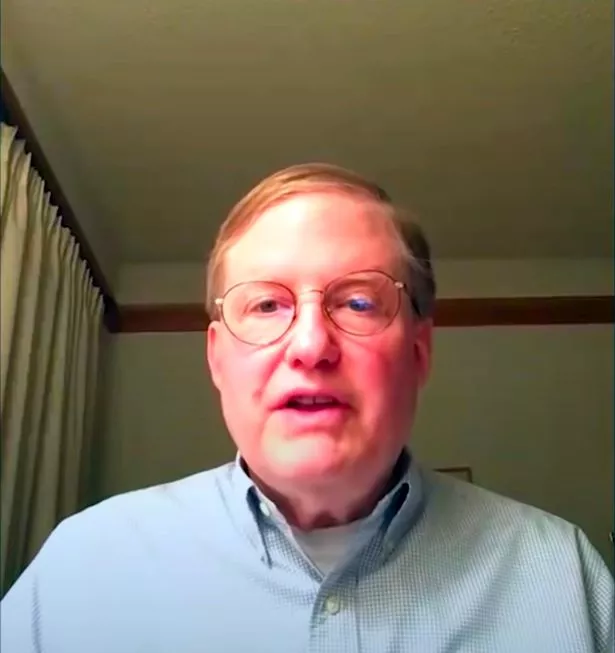
Scientist at the DIA; former leader of the AAWSAP program.
Relevance: He was responsible for managing the contract between the DIA and Bigelow Aerospace Advanced Space Studies (BAASS) to investigate UAPs and other anomalous phenomena, including the events documented at Skinwalker Ranch.
Co-author of the book Inside the U.S. Government Covert UFO Program, he is one of the most prominent voices among former U.S. government officials who claim to have had access to sensitive information about non-human technologies. In public statements, he asserted that “the United States is in possession of a craft of unknown origin and has accessed its interior.”
James T. Lacatski is an engineer with a PhD in Nuclear Engineering and has had a long career as a scientist within the U.S. Department of Defense. At the Defense Intelligence Agency (DIA), he specialized in emerging and unconventional aerospace threats, which led him to head the AAWSAP program in 2008.
During his time leading the program, he also served as a security coordinator, counterintelligence liaison, and technical manager for the BAASS contract. His work involved overseeing advanced studies on exotic propulsion, directed energy, antigravity, and reports of contact with phenomena considered beyond current scientific understanding.
After retiring, he became co-author of several works that reveal behind-the-scenes details of the program and related experiences, helping to shed light on previously hidden aspects of the U.S. government’s investigation into UAPs.
6 – General John J. Sheehan

Former Commander of U.S. European Command (EUCOM) and former NATO Supreme Allied Commander Atlantic.
Relevance: Although not directly involved in UAP-related matters, General Jack Sheehan is frequently mentioned in lists citing high-ranking military figures who may have been briefed on or involved in classified programs. His career placed him at the center of strategic national security decisions for both the United States and NATO during critical moments in recent history.
John Joseph “Jack” Sheehan is a retired four-star General of the United States Marine Corps (USMC), widely recognized for his leadership in large-scale military operations and his role in international command positions. Over 35 years of active service, he distinguished himself in major conflicts, strategic Pentagon roles, and the command of NATO allied operations.
During the Vietnam War, Sheehan demonstrated remarkable bravery in combat, earning the Silver Star Medal, one of the highest military honors in the United States, for acts of valor performed between September 14 and 17, 1968, while serving as a captain.
With a strong academic background — including a bachelor’s degree in English from Boston College and a master’s degree in Government from Georgetown University — Sheehan also completed elite military courses such as the Amphibious Warfare School, the Naval Command and Staff College, and the National War College.
Throughout his career, he commanded units of various scales — from company to brigade — in both the Atlantic and Pacific theaters. Between 1986 and 1988, he led the 8th Marine Regiment and later served in combat during Operation Desert Shield/Desert Storm in the early 1990s.
As a strategist, he held key positions at regimental, divisional, and joint levels, working closely with the U.S. Army, the Department of Defense, and the Atlantic Command.
The pinnacle of his military career came on October 31, 1994, when he was appointed to two of the most significant positions in Western defense:
NATO Supreme Allied Commander Atlantic (SACLANT), and
Commander-in-Chief, U.S. Atlantic Command (CINCUSACOM).
These roles placed him in direct command of U.S. and NATO naval forces during a decisive post–Cold War period, overseeing military restructuring and the redefinition of global threats. Prior to these appointments, Sheehan also served as Director of Operations (J-3) for the Joint Chiefs of Staff in Washington, D.C.
Sheehan officially retired from military service on September 24, 1997, leaving behind a legacy of respected and widely recognized leadership.
Following his retirement, Sheehan joined Bechtel International in 1998 as a senior vice president, working on global infrastructure and security projects. In 2012, he joined the Board of Directors of the Military Officers Association of America (MOAA) — one of the most influential organizations of retired U.S. military personnel — and was elected Chairman of the Board in 2016.
)
The six highlighted individuals — 1) Admiral Bobby Ray Inman, 2) Admiral Thomas R. Wilson, 3) General Neil McCasland, 4) Glenn Gaffney (CIA), 5) James T. Lacatski (DIA), and 6) General John J. Sheehan — share notable characteristics that make them particularly relevant in discussions about classified programs, advanced technology, and unidentified aerospace phenomena.
All of them held very senior positions within the U.S. defense, intelligence, and national security apparatus, granting them direct access to highly sensitive and often classified information. Whether commanding strategic global operations (as with Generals Sheehan and McCasland), leading intelligence and technology agencies (such as Gaffney and Inman), or heading highly specific and covert programs related to advanced aerospace threats (like Lacatski and Wilson), they have all been at the core of critical decisions involving national security, technological advancements, and potential unconventional threats.
Another common factor is their transition to the private sector after public service. Many moved to companies linked to the defense industry, aerospace technology, critical infrastructure, or strategic security, thereby maintaining proximity to emerging technologies and, in some cases, to highly sensitive government contracts. This migration underscores a continuity of access to restricted knowledge even after leaving active service.
Furthermore, the fact that all of them served in roles requiring direct interaction with classified programs—whether within NATO, the Department of Defense, the CIA, or the DIA—suggests they possess—and likely still possess—knowledge of subjects that go beyond conventional science and technology, including exotic aircraft, UAPs, and advanced aerospace capabilities.
In summary, these individuals represent a consistent pattern: high-level operational and strategic authorities who have worked in highly confidential environments and subsequently moved into private sectors where such knowledge can be applied or safeguarded.
Given this, this seems like a strong list of candidates who could be called upon to testify at the next public UAP hearing in the United States.

